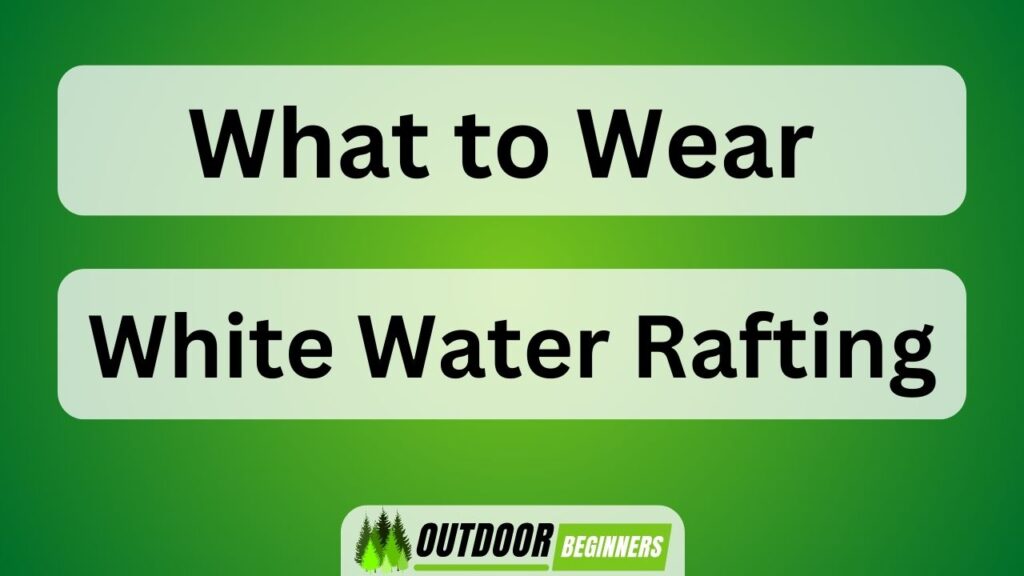Rafting is an exhilarating activity that has a rich history and offers various types of experiences. This article explores the origins of rafting, the equipment required for this pursuit, popular destinations for rafting adventures, important safety considerations, and the numerous benefits associated with engaging in this recreational activity.
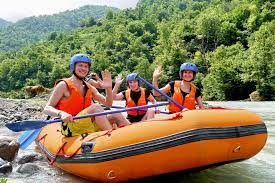
By delving into these aspects of rafting, this article aims to provide readers with a comprehensive understanding of what constitutes this thrilling experience while fostering an appreciation for its inherent thrill and allure.
Key Takeaways of What Is Rafting
- Rafting originated in ancient civilizations and has evolved into a popular recreational activity.
- There are different types of rafting, each offering diverse landscapes and adrenaline-pumping adventures.
- Essential gear for rafting includes a helmet, life jacket, paddle, and appropriate clothing for protection.
- Rafting provides physical exercise, outdoor recreation, stress reduction, and an opportunity to connect with nature.
The History of Rafting
The history of rafting can be traced back to ancient civilizations such as the Egyptians and Mesopotamians, who used rafts for transportation and trade purposes. Rafting has evolved from a practical means of transportation into an exhilarating recreational activity enjoyed by people worldwide. The allure of adventures on the water and the excitement it provides have made rafting one of the most popular recreational water sports today.
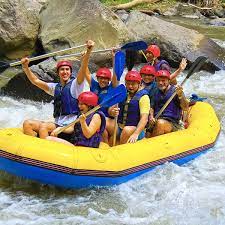
In ancient times, rafts were constructed using logs or bundled reeds tied together with ropes. These primitive vessels allowed ancient civilizations to navigate rivers, transport goods, and explore uncharted territories. Over time, rafting transformed into a thrilling pursuit that combines adrenaline-pumping rapids with breathtaking natural landscapes.
Modern-day rafting involves navigating turbulent whitewater rivers using specially designed inflatable rafts and paddles. It requires teamwork, skillful maneuvering, and physical endurance. Professional guides ensure safety while leading groups through challenging river sections, offering an unforgettable experience for enthusiasts seeking adventure on the water.
Rafting has become a staple in many outdoor recreation destinations worldwide. From serene floats along calm rivers to heart-pounding descents through roaring rapids, rafting offers individuals an opportunity to connect with nature while engaging in an exhilarating sport that continues to captivate adventurers around the globe.
Types of Rafting
Whitewater rafting can be categorized into different types based on the difficulty level of the river. These categories allow enthusiasts to choose the appropriate challenge level for their skills and experience.
There are various techniques employed in each type, including paddle rafting, where participants use oars to navigate through rapids; oar rafting, wherein a guide steers the boat using long oars; and inflatable kayak (also known as ‘duc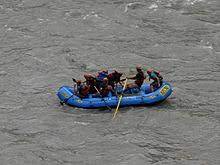 ky’) rafting, which involves maneuvering smaller boats individually.
ky’) rafting, which involves maneuvering smaller boats individually.
Popular rafting events such as the Grand Canyon in Arizona or the Zambezi River in Africa attract thrill-seekers from around the world. These events showcase not only the diverse landscapes but also provide opportunities for adrenaline-pumping adventures.
Understanding these different types of whitewater rafting sets the stage for discussing the necessary equipment needed for such exhilarating experiences.
Equipment Needed for Rafting
In order to engage in this thrilling outdoor activity, participants must be equipped with the appropriate gear and safety equipment.
Essential gear for rafting includes a helmet, life jacket, and paddle. These items are crucial for ensuring the safety of individuals navigating through turbulent waterways.
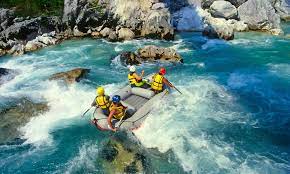
Additionally, other rafting accessories such as wetsuits, drysuits, and splash jackets are recommended to provide protection from cold water and adverse weather conditions. Wetsuits offer insulation and flexibility while drysuits provide full-body waterproof protection. Splash jackets keep participants dry by repelling water during intense rapids.
Neoprene booties or river shoes are also important for maintaining grip on slippery rocks and preventing foot injuries.
Investing in these essential gear items and rafting accessories is vital to enjoy a safe and exciting rafting experience.
Popular Rafting Destinations
Thrilling rapids worldwide offer an exhilarating adventure for thrill-seekers and outdoor enthusiasts. These powerful currents, found in various destinations across the globe, provide an adrenaline-pumping experience that tests one’s physical and mental strength.
Additionally, scenic river explorations allow individuals to immerse themselves in the beauty of nature as they navigate through tranquil waters surrounded by breathtaking landscapes.
Thrilling Rapids Worldwide
Rapids found across various locations globally offer an exhilarating experience for rafting enthusiasts. These extreme water sports provide an adrenaline rush like no other, as individuals navigate through turbulent waters, maneuvering their rafts skillfully to conquer the challenges presented by the rapids.
Rapids are characterized by fast-flowing water and sudden drops in elevation, creating thrilling waves and currents that demand quick reflexes and teamwork from participants. From the raging rapids of the Zambezi River in Africa to the intense whitewater of the Colorado River in North America, there are countless destinations around the world renowned for their exceptional rapids.
These heart-pounding experiences on the rapids set the stage for further exploration of scenic rivers, where adventurers can immerse themselves in breathtaking landscapes while indulging their passion for adventure sports.
Scenic River Explorations
Moving on from the discussion of thrilling rapids worldwide, we now delve into the realm of scenic river explorations. Adventure sports enthusiasts and outdoor activity seekers are drawn to these captivating journeys that combine adrenaline-pumping excitement with breathtaking natural beauty.
Scenic river explorations offer a unique opportunity to immerse oneself in the awe-inspiring landscapes that only rivers can provide. As participants navigate through calm stretches and turbulent rapids, they witness stunning vistas, lush vegetation, and diverse wildlife. The rhythmic flow of the water carries them through narrow gorges, expansive valleys, and picturesque canyons, each turn revealing a new marvel waiting to be discovered.
Whether it is traversing grand canyons or meandering through dense forests, these adventures offer an unparalleled experience where adrenaline meets serenity amidst nature’s magnificent creations.
Safety Tips for Rafting
Rafting is an exhilarating outdoor activity that requires careful consideration of safety measures. This discussion will focus on three key points to ensure a safe experience:
- Proper equipment and gear: Having the right equipment is essential for a safe rafting trip. This includes wearing a well-fitted life jacket, a helmet, and appropriate clothing for protection against the elements. Additionally, the raft itself should be in good condition and equipped with necessary safety features such as grab lines and foot braces.
- Effective communication and teamwork: Clear communication and teamwork are crucial for a successful and safe rafting experience. Rafters should establish hand signals and verbal cues to communicate effectively during the trip. It is important to listen to the guide or team leader and follow their instructions promptly. Working together as a team ensures that everyone is on the same page and can respond quickly to changing river conditions.
- Emergency preparedness measures: Despite taking precautions, emergencies can still occur while rafting. It is important to be prepared for such situations. This includes knowing basic rescue techniques, such as how to swim in whitewater and how to rescue a fellow rafter in case they fall out of the raft. Carrying a first aid kit and knowing how to use it is also essential. Additionally, being aware of the weather conditions and having a plan in case of severe weather is important for safety.
Proper Equipment and Gear
When engaging in the activity of rafting, it is essential to ensure that one possesses and utilizes the appropriate equipment and gear. Proper sizing is crucial for safety and comfort during the adventure. It is recommended to have a well-fitting personal flotation device (PFD), helmet, wetsuit or drysuit, and river shoes. The PFD should be snug but not restricting movements, while the helmet should fit securely on the head without obstructing vision or hearing. Additionally, maintaining the equipment is vital for its longevity and reliability. Regularly inspecting gear for any signs of wear and tear such as frayed ropes or damaged buckles can prevent accidents on the water. Cleaning equipment after use helps remove sand, dirt, and bacteria that may cause deterioration over time. By ensuring proper sizing and following maintenance tips, one can enhance their safety while enjoying this exhilarating water sport.
Transition:
With appropriate equipment secured, effective communication and teamwork become paramount during rafting expeditions.
Communication and Teamwork
Effective communication and teamwork are essential components of a successful rafting expedition, as they enable participants to navigate through challenging river conditions and coordinate their actions efficiently. In order to overcome the various challenges that may arise during a rafting trip, it is important for the team to employ effective communication techniques. This can include clear verbal instructions, hand signals, and using designated team roles. Table 1 provides an overview of some common communication techniques used in rafting:
| Communication Techniques | Description |
|---|---|
| Verbal Instructions | Clear and concise commands given verbally to convey specific actions or maneuvers required. |
| Hand Signals | Visual cues made with hands or paddles to communicate messages such as “forward”, “stop”, or “turn”. |
| Team Roles | Assigning specific responsibilities to each team member ensures coordination and reduces confusion. |
Emergency Preparedness Measures
In addition to effective communication and teamwork, emergency preparedness measures play a crucial role in ensuring the safety of rafters. Rafting is an adventurous activity that takes place in dynamic and unpredictable environments, such as fast-flowing rivers and challenging rapids. As such, it is essential for participants to be equipped with the necessary skills and knowledge to respond swiftly and effectively in case of emergencies.
First aid training is a fundamental aspect of emergency response in rafting, enabling individuals to provide immediate medical assistance until professional help arrives. This training typically covers topics like CPR, wound care, and basic life support techniques. By being well-prepared for potential emergencies, rafters can navigate unexpected situations with confidence and minimize the risks associated with this thrilling water sport.
Transitioning into the subsequent section about the benefits of rafting…
Benefits of Rafting
One potential benefit of rafting is the opportunity it provides for physical exercise and outdoor recreation. Rafting involves navigating through various water currents, paddling against the force of the river, and maneuvering around obstacles. These activities require strength, endurance, and coordination from participants, resulting in a full-body workout. In addition to the physical benefits, rafting also offers several health benefits. The adrenaline rush experienced during rafting can help reduce stress levels and improve mental well-being. Being surrounded by nature and engaging in an adventurous activity can also have a positive impact on overall mood and emotional state. Furthermore, rafting provides an opportunity for individuals to disconnect from technology and connect with nature, leading to increased relaxation and stress reduction.
| Health Benefits | Stress Reduction |
|---|---|
| Physical exercise | Adrenaline rush |
| Full-body workout | Improved mental well-being |
| Increased relaxation | Mood enhancement |
Table: Benefits of Rafting
Frequently Asked Questions
Are There Any Age Restrictions for Rafting?
Age restrictions for rafting vary depending on the location and the difficulty level of the rapids. It is important to check with the specific rafting company or organization as they may have age limits in place for safety reasons.
Is Previous Experience Required for Rafting?
Previous experience is not required for rafting, but it can enhance safety and enjoyment. However, safety precautions must be followed to ensure a successful adventure. Can one truly conquer the wild rapids without prior knowledge?
What Should I Wear While Rafting?
When preparing for a rafting adventure, it is important to consider the appropriate gear and safety precautions. Rafters should wear a wetsuit, helmet, and life jacket to protect against cold water, potential head injuries, and drowning.
How Long Does a Typical Rafting Trip Last?
A typical rafting trip can last for several hours, offering an exhilarating experience amidst the rushing waters. The duration varies depending on the chosen route and level of difficulty. Proper equipment such as helmets, life jackets, and paddles are recommended for safety.
What Is the Cost of a Rafting Trip?
Rafting trips vary in cost depending on factors such as location, duration, and the quality of equipment provided. Some popular destinations for rafting include rivers with class III or IV rapids, offering thrilling and challenging experiences for adventure seekers.
Conclusion
Rafting, an exhilarating water sport that dates back centuries, offers a thrilling experience for adventure enthusiasts. From navigating treacherous rapids to peacefully floating down scenic rivers, there are various types of rafting experiences to suit every thrill-seeker’s taste.
To embark on this exciting journey, one must be equipped with essential gear like helmets, life jackets, and sturdy rafts. Popular destinations for rafting include the Grand Canyon in the United States and the Zambezi River in Africa. Safety is paramount in this adrenaline-pumping activity, so it’s important to follow guidelines and seek professional guidance.
Besides the sheer excitement and adrenaline rush, rafting has numerous benefits such as enhancing physical fitness and fostering teamwork skills. So why not take a plunge into this extraordinary adventure?

